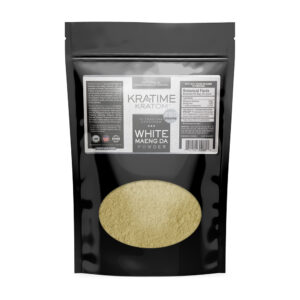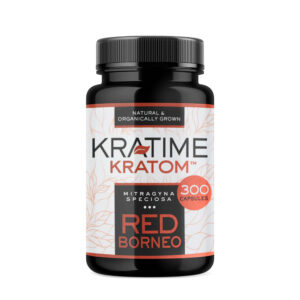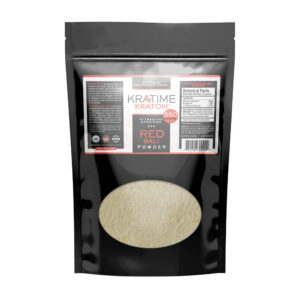Kratom, a tropical tree native to Southeast Asia, has been used for centuries for its medicinal and recreational properties. This fascinating plant has a rich history and a complex journey from traditional use to modern popularity. Let’s delve into the origins and history of Kratom, uncovering its path from ancient rituals to contemporary debates.
What is Kratom?
Understanding Kratom
Kratom (Mitragyna speciosa) is a tropical tree belonging to the coffee family. It is indigenous to Thailand, Indonesia, Malaysia, and other regions of Southeast Asia. The leaves of the Kratom tree have been used traditionally for their stimulant and sedative properties, depending on the dosage.
Botanical Background
Kratom is an evergreen tree that can grow up to 25 meters in height. Its leaves contain a variety of alkaloids, with mitragynine and 7-hydroxymitragynine being the most notable. These alkaloids interact with the brain’s opioid receptors, providing pain relief, mood enhancement, and energy boosts.
Ancient Uses of Kratom
Traditional Practices in Southeast Asia
For centuries, Kratom has been an integral part of Southeast Asian culture. Farmers and laborers would chew the leaves to combat fatigue and enhance productivity. In Thailand, it was used in religious ceremonies and as a traditional remedy for various ailments.
Medicinal Uses by Indigenous People
Indigenous communities have long used Kratom as a natural medicine. It was employed to treat conditions such as diarrhea, pain, and fever. Additionally, it was believed to have properties that could help wean individuals off opium addiction, showcasing its versatility and importance in traditional medicine.
The Discovery of Kratom by Westerners
First Encounters
Western interest in Kratom began in the 19th century when Dutch colonial botanists first documented the plant. Pieter Korthals, a Dutch botanist, was one of the first to describe Kratom scientifically, noting its unique properties and traditional uses.
Initial Studies and Documentation
Early studies in the late 1800s and early 1900s focused on understanding the pharmacological effects of Kratom. These initial investigations laid the groundwork for future research, highlighting the plant’s potential therapeutic benefits and psychoactive effects.
Kratom in the 20th Century
Early Research and Scientific Interest
The early 20th century saw an increase in scientific interest in Kratom. Researchers explored its alkaloid composition and potential medical applications. Studies conducted during this period provided valuable insights into Kratom’s pharmacodynamics and therapeutic potential.
Cultural Integration and Popularity
Throughout the 20th century, Kratom began to spread beyond Southeast Asia. Immigrants brought their knowledge of Kratom to other parts of the world, gradually increasing its popularity. By the late 20th century, Kratom had become a subject of interest in various subcultures, particularly within the context of natural medicine and herbal supplements.
Modern-Day Use of Kratom
Global Spread and Commercialization
In recent decades, Kratom has experienced a surge in global popularity. It is now available in various forms, including powders, capsules, and extracts. The commercialization of Kratom has made it accessible to a wider audience, leading to its use for both medicinal and recreational purposes.
Health Benefits and Recreational Use
Many users turn to Kratom for its purported health benefits, such as pain relief, anxiety reduction, and improved mood. Additionally, it is used recreationally for its stimulating and euphoric effects. This duality of use has contributed to Kratom’s growing popularity in the wellness community.
The Controversy Surrounding Kratom
Legal Status Worldwide
Kratom’s legal status varies significantly across the globe. While some countries, like Thailand and Indonesia, have embraced its use, others have imposed strict regulations or outright bans. In the United States, Kratom’s legality is a contentious issue, with differing regulations at the state and federal levels.
Health Concerns and Misconceptions
Despite its benefits, Kratom is not without controversy. Concerns about its safety, potential for addiction, and lack of regulation have sparked debates among health professionals, lawmakers, and users. Misconceptions about Kratom often stem from a lack of comprehensive research and understanding.
Kratom in Traditional Medicine
Ayurvedic Practices
Kratom has found a place in Ayurvedic medicine, where it is used to balance the body’s energies and treat various ailments. Its incorporation into this ancient system of medicine underscores its long-standing reputation as a versatile and effective natural remedy.
Traditional Chinese Medicine
In Traditional Chinese Medicine (TCM), Kratom is utilized for its analgesic and sedative properties. Its use in TCM highlights its adaptability and the recognition of its therapeutic potential across different cultures and medical systems.
Kratom’s Role in Modern Medicine
Potential Therapeutic Benefits
Modern medicine is beginning to explore Kratom’s potential therapeutic benefits more rigorously. Research is ongoing into its use for pain management, opioid withdrawal, and mental health conditions. These studies aim to provide a clearer understanding of Kratom’s efficacy and safety.
Ongoing Research and Studies
Current research efforts focus on isolating and understanding the various alkaloids in Kratom. Scientists are investigating how these compounds interact with the body and their potential applications in treating a range of medical conditions. This ongoing research is crucial for validating Kratom’s medicinal value.
Kratom and the Internet Age
Online Communities and Advocacy
The rise of the internet has significantly impacted Kratom’s popularity. Online communities and advocacy groups have formed to share information, experiences, and support. These digital platforms have played a key role in spreading awareness and influencing public opinion on Kratom.
Market Growth and Accessibility
E-commerce has made Kratom more accessible than ever before. Consumers can easily purchase Kratom products online, contributing to the growth of a global market. This increased accessibility has both positive and negative implications for regulation and quality control.
The Future of Kratom
Emerging Trends and Innovations
As Kratom continues to gain popularity, new trends and innovations are emerging. These include the development of new products, such as enhanced extracts and blends, as well as advancements in cultivation techniques. The future of Kratom looks promising, with potential for further integration into mainstream wellness and medicine.
Regulatory Changes and Their Impact
The future of Kratom will also be shaped by regulatory changes. As more research is conducted and public awareness grows, regulatory bodies may adjust their stance on Kratom. These changes will impact its availability, quality, and the perception of its benefits and risks.
Conclusion
Kratom’s journey from a traditional remedy in Southeast Asia to a global phenomenon is a testament to its enduring appeal and potential. Despite the controversies and challenges it faces, Kratom continues to be valued for its medicinal properties and recreational benefits. As research progresses and public awareness increases, Kratom’s role in both traditional and modern medicine is likely to evolve, offering new insights and opportunities for its use.
FAQs
What is Kratom?
Kratom is a tropical tree native to Southeast Asia, known for its stimulant and sedative properties. Its leaves contain alkaloids that interact with the brain’s opioid receptors, providing various effects.
Is Kratom legal?
The legal status of Kratom varies worldwide. While some countries allow its use, others have imposed restrictions or bans. In the United States, Kratom’s legality differs by state and is subject to ongoing debate.
What are the benefits of Kratom?
Kratom is used for pain relief, anxiety reduction, mood enhancement, and increased energy. It is also used recreationally for its euphoric effects.
Are there any side effects of using Kratom?
Side effects of Kratom can include nausea, dizziness, constipation, and dependency. It is important to use Kratom responsibly and be aware of its potential risks.
Where can I buy Kratom?
Kratom is available for purchase online and in some specialty stores. It is important to buy from reputable sources to ensure product quality and safety.







